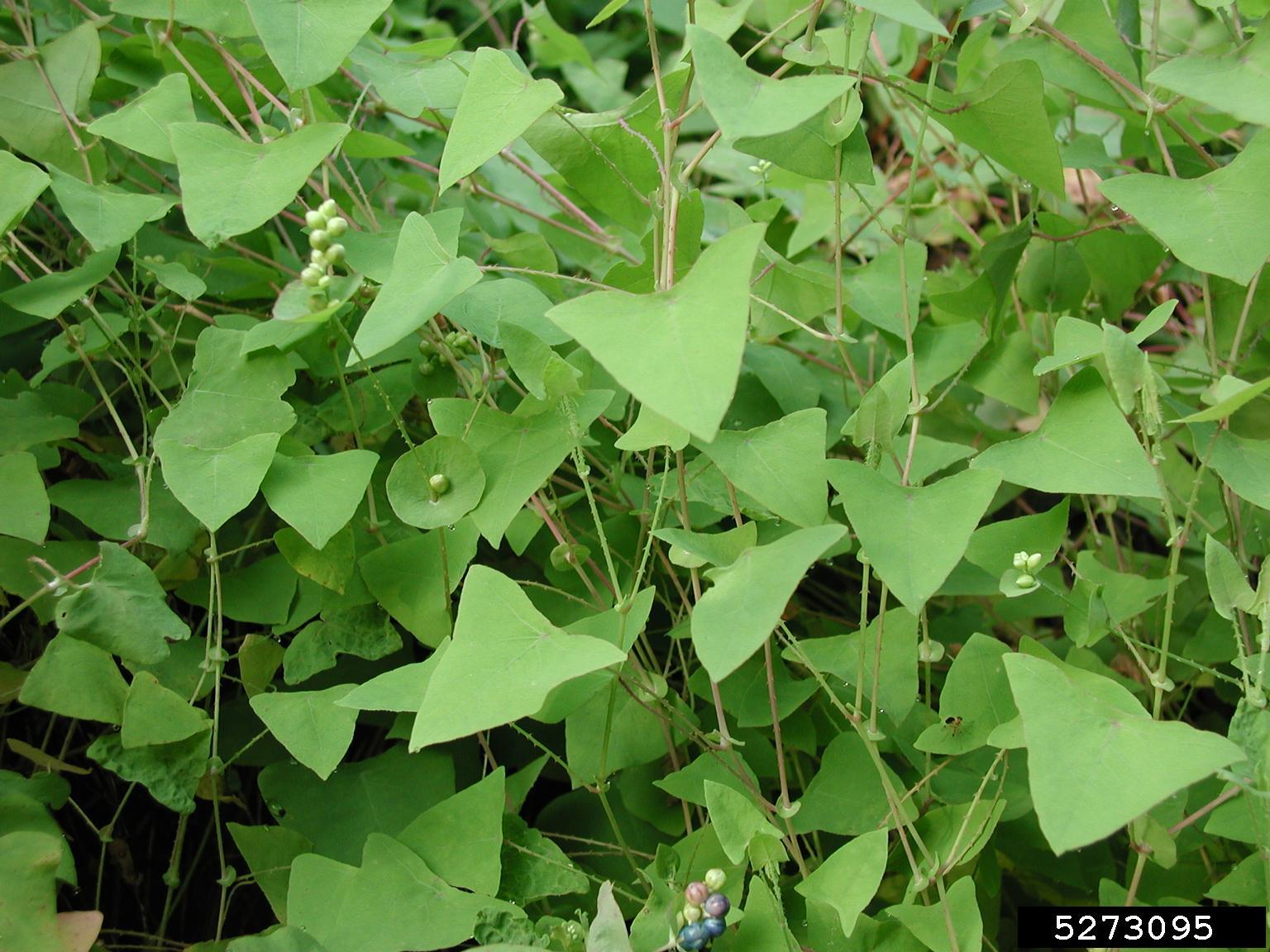What Is Mile-A-Minute Weed – Controlling Mile-A-Minute Weeds In The Landscape


What is mile-a-minute weed? The common name gives you a good idea about where this story is heading. Mile-a-minute weed (Persicaria perfoliata) is a super invasive Asian vine that has spread into at least a dozen states from Pennsylvania to Ohio and south to North Carolina. Are you worried about controlling mile-a-minute weeds in your backyard? Read on for information about mile-a-minute weed control.
What is Mile a Minute Weed?
Mile-a-minute weed grows fast, and that’s a fact. Experts say that these prickly annual vines can grow up to 6 inches in 24 hours, and are much akin to kudzu! The vines germinate in early spring, then grow amazingly fast, growing on top of and smothering out neighboring plants. The white flowers are followed by berry-like fruit. The vine dies off by the first frosts, but not soon enough to prevent its spread. Each individual plant can produce thousands of seeds, and these are spread far and wide by birds, mammals, wind and water. Therein lies the problem: they do spread. Mile-a-minute weeds grow happily in any disturbed area and invade forested floodplains, streamside wetlands and upland woods.
Mile a Minute Weed Control
If you are interested in getting rid of mile-a-minute weeds in your garden or backyard, don’t despair. Mile-a-minute weed control is possible.
Herbicides
One way of controlling mile-a-minute weeds is to spray them with a foliar non-selective herbicide treatment, which passes into the plants’ roots and kills them. Use a 1 percent mix and apply after mid-July. Chemical control should only be used as a last resort, as organic approaches are more environmentally friendly.
Mechanical Controls
You can also start controlling mile-a-minute weeds by using force. Pull them up by hand or mow them down. If this seems like too much work, an easier method of control involves livestock. Bringing in goats or sheep for targeted grazing also works well. This is particularly useful in areas that are difficult to access with machinery. When you are getting rid of these weeds, don’t forget that your primary task is to prevent the seeds from spreading. Chop out the vines or spray them before the seeds are mature, and keep your eye out for new vines developing.
Biological Control
You can also bring in reinforcements in the fight with the weeds in the form of mile-a-minute weevils, Rhinocominus latipes Korotyaev. These tiny insects are host specific to mile-a-minute weed plants and can control this invasive vine. How do they destroy the weed? Mature females lay their eggs on the vine’s leaves and stems. The eggs turn into larvae which bore into and feed on the vines’ stems. Adult weevils also eat the leaves and then spend the winter in the fallen leaf litter. Note: Any recommendations pertaining to the use of chemicals are for informational purposes only. Chemical control should only be used as a last resort, as organic approaches are safer and more environmentally friendly
Gardening tips, videos, info and more delivered right to your inbox!
Sign up for the Gardening Know How newsletter today and receive a free copy of our e-book "How to Grow Delicious Tomatoes".

Teo Spengler is a master gardener and a docent at the San Francisco Botanical Garden, where she hosts public tours. She has studied horticulture and written about nature, trees, plants, and gardening for more than two decades. Her extended family includes some 30 houseplants and hundreds of outdoor plants, including 250 trees, which are her main passion. Spengler currently splits her life between San Francisco and the French Basque Country, though she was raised in Alaska, giving her experience of gardening in a range of climates.
-
 Looking For Plants To Give You The Soft And Fuzzies? Try These 5 Fuzzy Leaf Plant Options
Looking For Plants To Give You The Soft And Fuzzies? Try These 5 Fuzzy Leaf Plant OptionsLovers of texture, drama, silver foliage and tactile plants will adore these special sensory garden additions. These fuzzy leaf plant options will leave you all aglow
By Susan Albert
-
 Get Ready For A Summer Of Hummers! Grow These Full Sun Hummingbird Plants and Flowers
Get Ready For A Summer Of Hummers! Grow These Full Sun Hummingbird Plants and FlowersIf you’re lucky enough to enjoy a sunny backyard, make sure you are maxing out on your pollinator opportunities and grow these full sun hummingbird plants and flowers
By Tonya Barnett